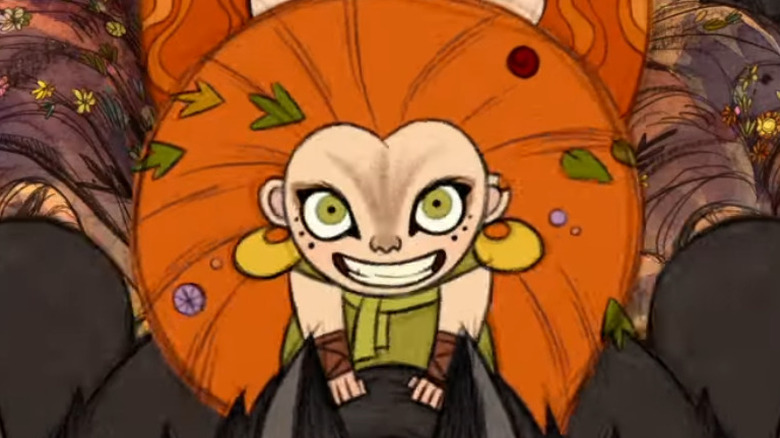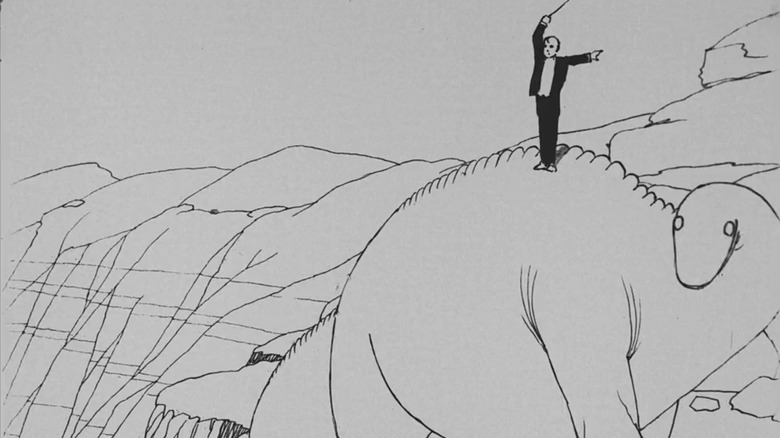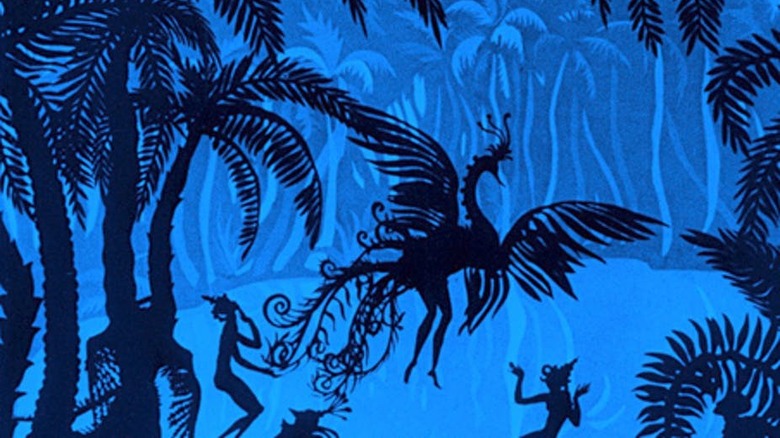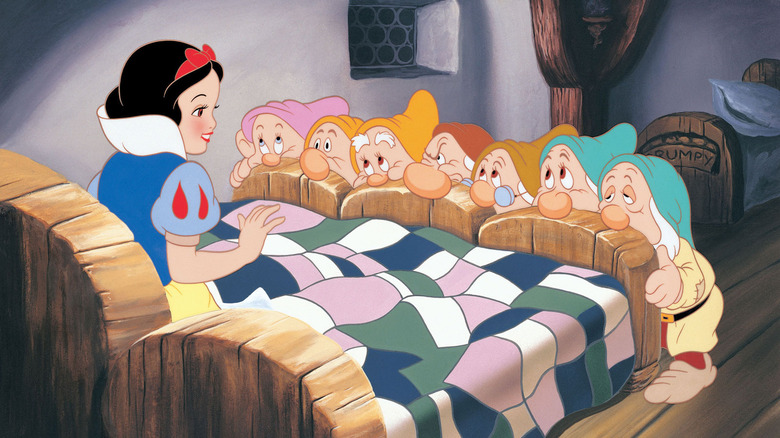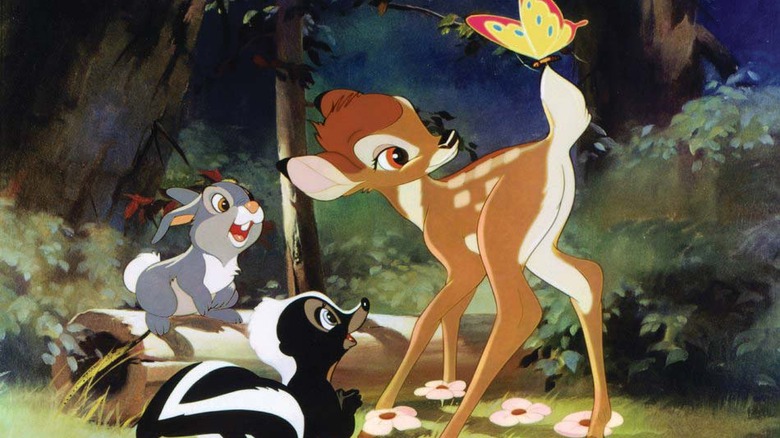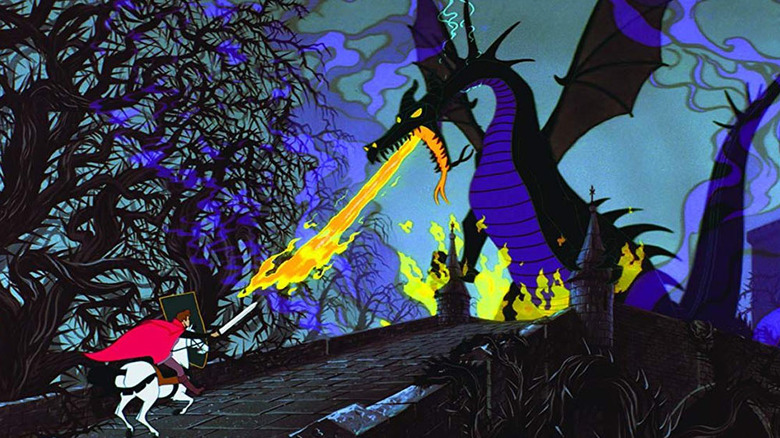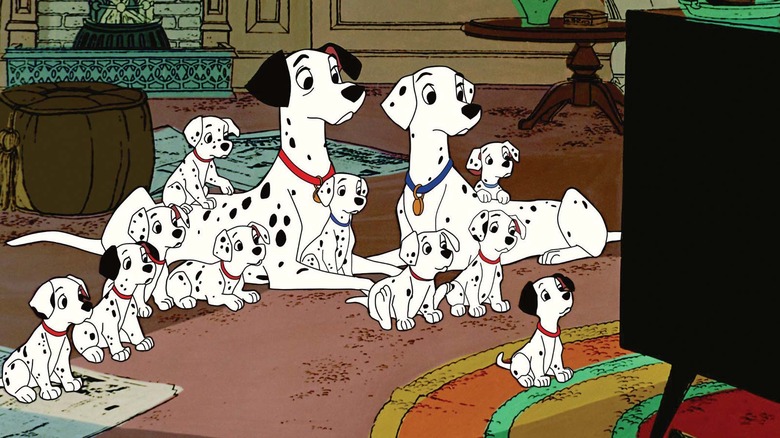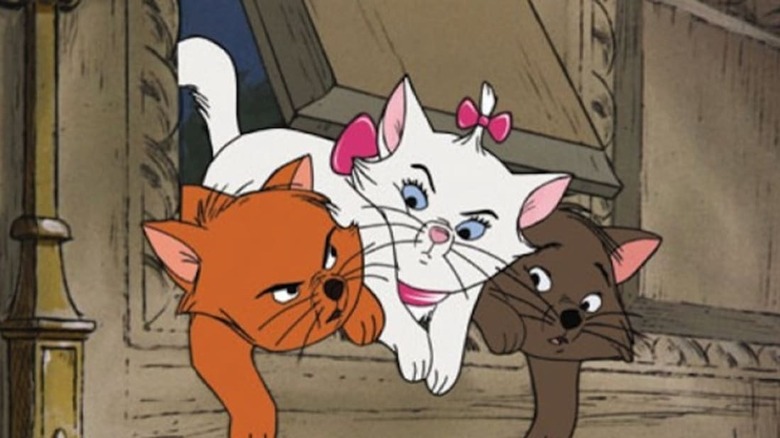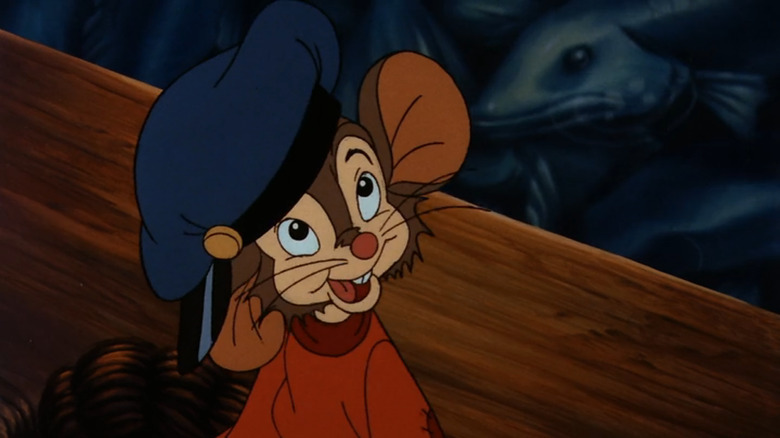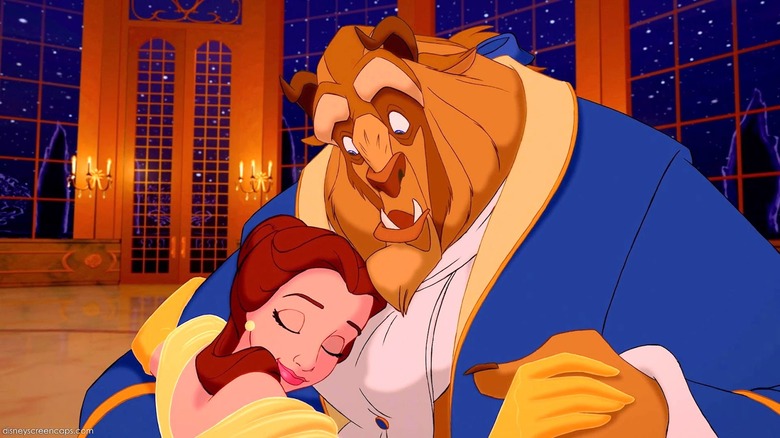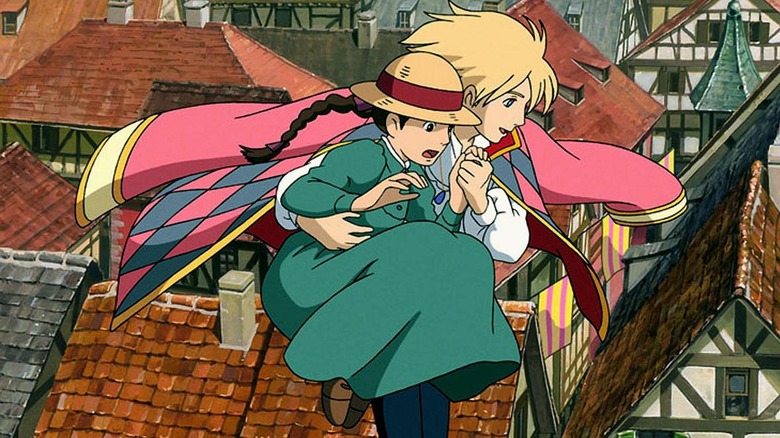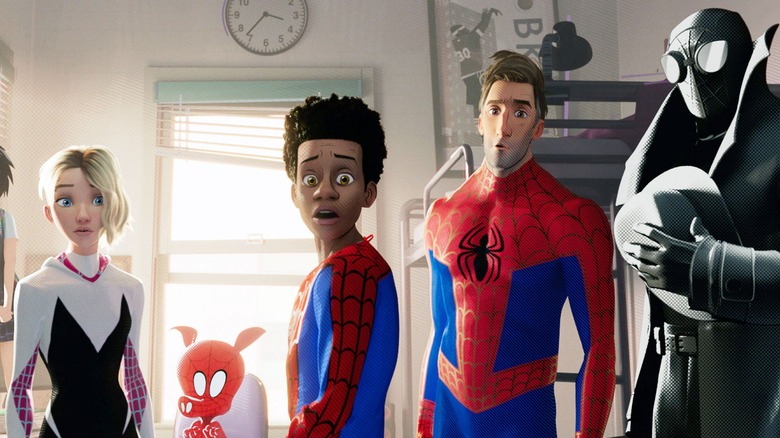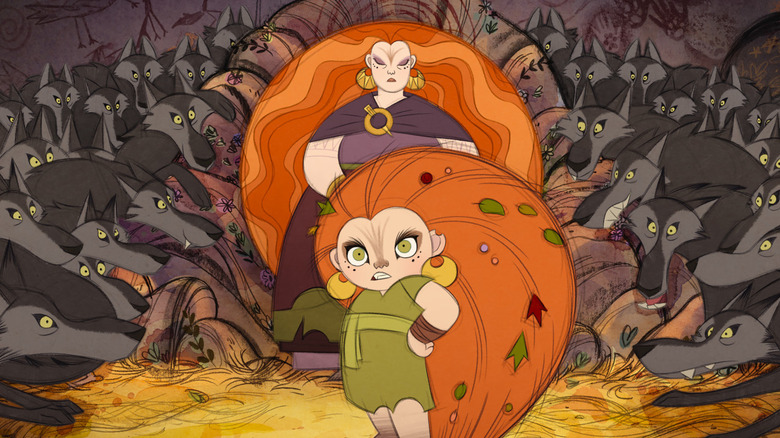The Best Animated Film Of Each Decade
Animation has been a tried-and-true staple at theaters since the birth of cinema itself, and while the format has had its creative ups and downs, there are great animated films to be found through each decade of film history. While Disney has something of a monopoly on the entire field of children's animation, especially before some legitimate competitors began to surface in the '80s, there's a wealth of animated films that go far beyond your traditional Disney fare.
From the silent era, during which theatrical animation was still in its infancy, to the classic fairy tale adaptations that defined our childhoods, to the modern, innovative films that break new ground every day, animation is an incredibly expansive medium with much to offer audiences. It's well past time we treat animation with the respect it deserves; not just as children's entertainment, but as a legitimate art form in its own right.
The 1910s — Gertie the Dinosaur
Let's be real: The 1910s are sort of slim pickings for animation, with the genre just being developed and all. "Gertie the Dinosaur" is not just the best animated film from the decade. It's widely credited as the first animated film, period (whether that's actually true is beside the point). And it's very cute! Gertie herself is appropriately adorable, paving the way for Disney's well-documented penchant for sweet anthropomorphized animals.
Although the design of Gertie is very simple, little more than a black and white line drawing, animator Winsor McCay's work is surprisingly sophisticated. It's not long — the entire cartoon only runs for about 14 minutes, and was initially created to serve as a brief novelty act as part of a vaudeville show. And yet, McKay gives Gertie lots of personality, taking special care to make her move naturalistically, lungs heaving and muscles flexing as she playfully responds to her master's commands.
The 1920s — The Adventures of Prince Achmed
Walt Disney gets a lot of credit for his early animation work. But although "Steamboat Willie," the first film to feature Mickey Mouse himself, helped to establish a brand that came to dominate the animation industry, German animator Lotte Reiniger proved that animation was an artform in its own right a full two years before Mickey hit the screen.
On "The Adventures of Prince Achmed," Reiniger used a uniquely laborious style of animation, painstakingly cutting out all of her figures and background structures by hand. These cutouts were then manipulated frame by frame, a process that took Reiniger three years to complete, and tinted with color. The effect is strikingly beautiful. "The Adventures of Prince Achmed" feels full of life, and the gentle movements of her shadow puppets gives Reiniger's interpretation of a classic fairy tale an atmosphere and spirit unlike other piece of animation made before or since.
The 1930s — Snow White and the Seven Dwarfs
With "Snow White and the Seven Dwarfs," Walt Disney got his massive animation empire up and running in earnest, and it's a credit to the creative minds at Disney that it was firing on all cylinders pretty much right off the bat. This was the film that proved to Hollywood that there was profit to be made in feature-length animation, a fact that we take for granted now but that was very much still in question during the '30s.
Until that point, animated shorts were incredibly popular as a component of the overall cinematic experience, during which they were combined with newsreels and two longer films. But few studios were willing to take on the risk and expense of creating an entire full-length animated film. "Snow White and the Seven Dwarfs" changed all that, with its charming songbird princess, iconic evil queen, and lovable troupe of supporting dwarfs, who were each brought to life with their own unique and easily identifiable personality.
The 1940s — Bambi
Of all the films on this list, "Bambi" is probably the one with the least amount of replay value. That's not a commentary on its quality, though. Far from it. If people find it difficult to rewatch "Bambi," it's because it's too painful; "Bambi" was the Disney movie that taught us all that an animated film can make a powerful emotional statement. Just because it's a cartoon doesn't mean that it can't make you hurt.
"Bambi" starts as a cute romp starring anthropomorphic woodland animals, following a baby deer who grows up and befriends rabbits and skunks and other small critters. It's a smokescreen. Because then, with absolutely no warning, "Bambi" goes to the darkest place imaginable, forcing the audience to watch a child grieving its mother while casting humanity as the villain. With its gorgeous, Japanese-inspired backdrops and powerful emotional core, "Bambi" is perhaps the moving and artistic of Disney's early films.
The 1950s — Sleeping Beauty
"Sleeping Beauty" is the finest Western fairy tale adaptation in animated movie canon. The classic French story is familiar, of course: A young, cursed princess falls into a deathlike sleep, only to be woken by a handsome prince. Appropriately, the animation style has a timeless quality to it, and more than most Disney movies features an incredible attention to detail that makes each individual frame to look like a work of art. Even the backgrounds are gorgeous to look at.
Disney somehow manages to balance the fairy tale elements of the story with its traditional musical numbers, as well as some well-timed humor; even after all of these years, "Sleeping Beauty" never feels dated, just classic. "Sleeping Beauty" contains both stunning warmth and a malevolent, terrifying sense of darkness. It's a work of magic, pure and simple, and it's the epitome of what people mean when they talk about classic Disney animation.
The 1960s — 101 Dalmatians
There is no universe in which "101 Dalmatians" gets anywhere near the credit it deserves. In fact, when it first came out, a lot of people were critical of its sketchy animation, a far cry from the opulent, detailed landscapes featured in the Disney films of the previous decade. But "101 Dalmatians" gets the last laugh, because its charming puppies and wildly fiendish villain have stood the test of time.
Roger and Anita are one of Disney's sweetest couples, and Roger's pointedly passive-aggressive song about Cruella DeVil is a cheeky delight. But most of all, "101 Dalmatians" has great, understated set pieces scattered throughout, like the sequence in which Pongo watches the street, looking for a woman to be Roger's mate, and a series of women walk by with their pet dogs, all of whom bear a striking resemblance to their owners. Despite the dark storyline (they're planning on murdering a bunch of dogs) and the foggy London scenery, "101 Dalmatians" is a light-hearted jewel in the Disney vault.
The 1970s — The Aristocats
"The Aristocats" came out at a time when Disney had unquestionably lost a little bit of its luster. Nestled between the heyday of classic Disney but not quite part of the Disney Renaissance, "The Aristocats" sneaks under the radar. Basically, there's a beautifully regal cat (played by Eva Gabor) and her three stupidly adorable kittens who end up lost because their owner's butler catches wind that they're in line for a hefty inheritance and plots to dispose of them.
Ultimately, "The Aristocats" is just tons of fun animal hijinks set to a cool, jazzy soundtrack ("Everybody Wants to Be a Cat" is a banger, even if it is marred by the horrifically offensive Siamese cat character). But, let's be honest, "The Aristocats" is really here because it contains the single greatest Disney character ever created: Uncle Waldo, the comically drunken goose. An absolute treasure, he reflects a Disney that's willing to embrace the off-kilter and irreverent, and the movie is better for it.
The 1980s — An American Tail
Animator Don Bluth was on a pretty impressive run during the late '80s. After parting ways with Disney in 1979, Bluth went on to create some of the only animated films that were able to challenge the Mouse at the box office. And "An American Tail," released in 1986 as part of a collaboration with Steven Spielberg, was one of his absolute best.
A historical musical, "An American Tail" told the story of a young Russian mouse who emigrates with his family to New York City at the turn of the century to escape a dangerous pogrom led by cats, only to be separated from his parents and forced to face a brave new world all by himself. Fievel Mousekewitz is probably the sweetest, cutest, most endearing cartoon mouse ever committed to celluloid. His journey through New York City is terrifying and exhilarating in equal measure, held together by Fievel's ongoing sadness over his lost family, beautifully expressed by the devastating song, "Somewhere Out There." Even just thinking about it should make you emotional.
The 1990s — Beauty and the Beast
Disney animation has always been popular, but "Beauty and the Beast" was when its output began getting serious respect from the critical community. It was the first animated film ever to be nominated for best picture at the Academy Awards, and it heralded the peak of the Disney Renaissance, which began in earnest a few years earlier with "The Little Mermaid."
Its story about a bookish girl from a small French village who is held captive by a cursed prince trapped a monstrous form is perhaps not the most conventional of romances. However, audiences were won over by the magical castle, the servants who had been transformed into common household furniture, and some excellent music from Howard Ashman and Alan Menken (the duo won the Oscar for best song for the title track, although Ashman sadly died of AIDS before the film's release). Cynical audiences may raise an eyebrow at the idea of Belle falling in love with the man literally holding her hostage, but, on the other hand, you have the antics of Lumiere and Cogsworth. They're pretty difficult not to be charmed by.
The 2000s — Howl's Moving Castle
It required a pretty serious internal conversation not to make this list just a collection of Miyazaki films. So, just know that, for every movie included here, a Miyazaki movie could have easily taken its place. "Howl's Moving Castle" is perhaps less well-regarded than "Spirited Away," but it has a lighter touch and a vibe that isn't quite as unsettling, so it seemed like it deserves a little extra credit.
A young, mild-mannered hat-maker named Sophie is cursed, becoming a 90-year-old woman. In an effort to break the spell, she heads off on an adventure with a wizard named Howl, who is facing his own battles. "Howl's Moving Castle" is an immensely imaginative story, with a deep roster of fascinating side characters that flesh out the film wonderfully. Miyazaki's films are never what you might call pro-war, but his particular anger at the Iraq War (which was unfolding during production) is felt especially strongly here, creating an eccentric fairy tale with lots going on underneath the surface.
The 2010s — Spider-Man: Into the Spider-Verse
In the last few decades, we've had three different Spider-Man reboots. By the time "Spider-Man: Into the Spider-Verse" came out in 2018, it was hard to imagine anyone a fresh perspective to the lovable but well-worn superhero. Surprisingly, "Spider-Man: Into the Spider-Verse" may be the most unique and exciting film starring a Marvel character to arrive in ages.
Focusing on Miles Morales instead of Peter Parker was a smart decision, as Miles brings a youthful energy that makes the entire franchise feel new. "Into the Spider-Verse" also features a bold, frenetic animation style that pays homage to the character's comic book origins, and the way that the movie utilizes its different iterations of the Spider-Man character is inspired. Forget the weighty continuity that most Marvel films are born into: This Spider-Man outing is happy to simply be a fun, dynamic, and surprisingly poignant ride.
The 2020s — Wolfwalkers
The 2020s are still getting started, so there aren't too many animated films to choose from yet. However, even this early on, "Wolfwalkers" is still a strong contender for the best animated film of the decade. A gorgeously hand-drawn adventure combining Irish history with ancient mythology and a feminist tale of nonconformity, "Wolkwalkers" is as charming as it is beautiful.
The way that filmmakers Tomm Moore and Ross Stewart design the wolves and depict their unique sense of smell is lovely, and it is well grounded by the two voice actors who play Robyn and Mebh. Honor Kneafsey and Eva Whittaker were 15 and 12 years old, respectively, at the time of filming, but despite their young ages, they bring tremendous heart and spirit to "Wolfwalkers." In a society where girls have such rigidly defined expectations of behavior placed upon them, it's great fun to see Robyn and Mebh find the freedom to run and play in the forest together, unencumbered by rules of the world they live in.
